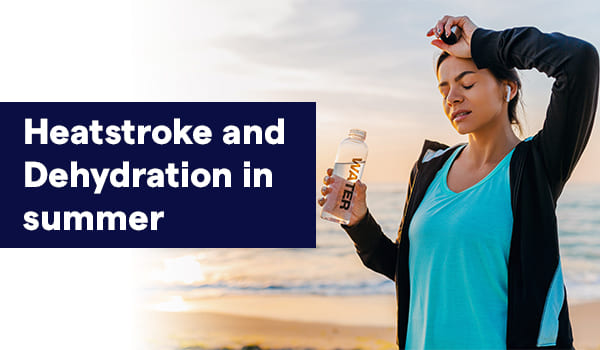
Summer in India isn't just a change in season; it's a test of endurance. Soaring temperatures and relentless sunshine can quickly lead to dehydration and, in severe cases, heatstroke. These conditions pose a serious health risk, especially for vulnerable populations like children, the elderly, and outdoor workers. It is important to stay hydrated and take breaks in the shade to prevent heat-related illnesses.
⦁ Heatstroke: This life-threatening condition occurs when your body overheats and can't cool itself down. When the core body temperature reaches 104°F (40°C) or higher, organs begin to malfunction, leading to confusion, seizures, coma, and even death.
⦁ Dehydration: This happens when you lose more fluids than you consume. Even mild dehydration can cause fatigue, headaches, and dizziness. Left untreated, it can progress to heatstroke.
⦁ Prevent Heatstroke: Visit Sir Ganga Ram Hospital for expert care and advice.
India is particularly vulnerable to heatstroke due to several factors:
⦁ Rising Temperatures: Climate change is leading to more frequent and intense heatwaves. Many parts of India regularly experience temperatures exceeding 40°C (104°F).
⦁ Dense Population: Urban areas with crowded housing and limited green spaces trap heat, creating "urban heat islands" that exacerbate the problem.
⦁ Outdoor Work: Millions of Indians, especially daily wage laborers, and street vendors have no choice but to work outdoors in the scorching sun.
Heatstroke Symptoms to watch:
Early detection is crucial for preventing heatstroke. Here are some warning signs:
⦁ High body temperature (above 104°F)
⦁ Excessive sweating (or no sweating at all)
⦁ Red, hot, and dry skin
⦁ Nausea, vomiting, and diarrhea
⦁ Rapid heartbeat
⦁ Headaches and dizziness
⦁ Confusion, irritability, or slurred speech
⦁ Seizures or comas (in severe cases)
Staying hydrated is crucial to preventing heat-related illnesses.
Dehydration is the root cause of heatstroke. Here's how to stay hydrated in the Indian summer:
⦁ Drink Plenty of Water: Aim for at least 2-3 liters of water per day, even if you don't feel thirsty. Carry a reusable water bottle wherever you go.
⦁ Go Beyond Water: Opt for cooling drinks like coconut water, buttermilk (chilled chaachh), and fresh fruit juices diluted with water.
⦁ Electrolyte Power: Consider oral rehydration solutions (ORS) to replenish electrolytes lost through sweating. These are readily available at pharmacies and can be especially helpful during intense physical activity.
⦁ Schedule Activities Wisely: Avoid strenuous activities or outdoor work during peak heat hours (usually between 11 a.m. and 4 p.m.).
⦁ Dress for the Season: Wear loose-fitting, light-colored cotton clothes that allow your skin to breathe. Protect your head with a wide-brimmed hat and sunglasses.
⦁ Seek shade and air conditioning: Spend time in air-conditioned spaces whenever possible. If working outdoors, seek shade regularly and take cool showers throughout the day.
⦁ Limit alcohol and caffeine: These substances can dehydrate you and worsen heatstroke symptoms.
⦁ Look Out for Others: Ensure the well-being of vulnerable individuals during heatwaves: Seek guidance from Sir Ganga Ram Hospital for expert assistance.
Act Fast: Book an appointment with Sir Ganga Ram Hospital immediately for emergency treatment of heatstroke.
Act promptly if you suspect heatstroke: Reach out to Sir Ganga Ram Hospital for immediate medical intervention:
⦁ Move them to a cool, shaded area.
⦁ Loosen their clothing and encourage them to lie down.
⦁ Cool them down with water or wet clothes.
⦁ Offer fluids if they are alert.
Contact Sir Ganga Ram Hospital the best medicine hospital in Delhi for urgent medical care. Seek urgent medical assistance at Sir Ganga Ram Hospital or call for an ambulance.